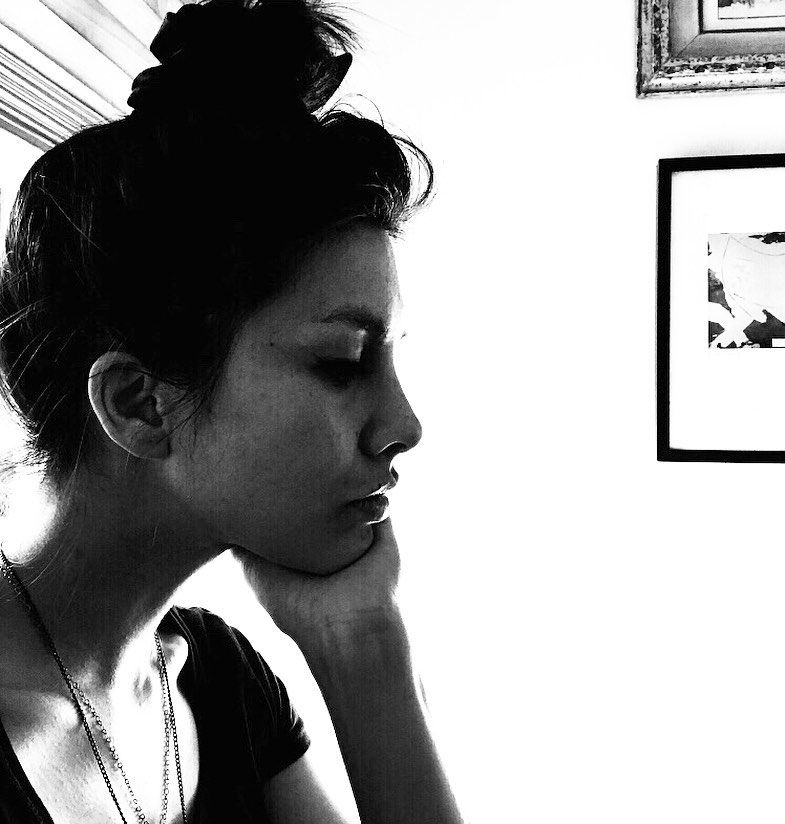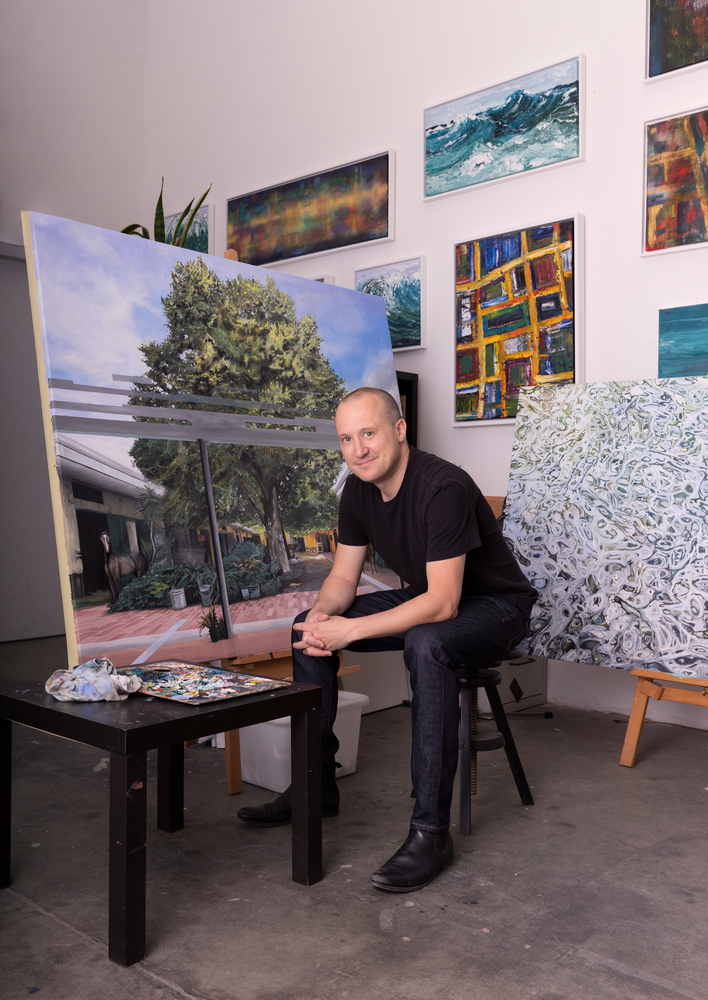Louise Howard has always had an innate calling to art. Ever since she can remember, she has always engaged in something creative. But painting has been the one constant she has always returned to, like an old reliable friend she feels most comfortable with…
What made you approach art and become an artist? (events, feelings, experiences…)
I’ve always had an innate calling to art. Ever since I can remember, I’ve always engaged in something creative. But painting has been the one constant I have always returned to, like an old reliable friend with whom I feel most comfortable.
What is your artistic journey, techniques and subjects have you experimented with?
Aside from painting which I got into as soon as I could hold a brush, I ventured into a few different genres of art, which included making jewellery, sculpture, a photography course at college and drawing in between.
My subject matter has generally always centred around the human form in varying contexts and incarnations. I am fascinated by the human condition and have always strived to translate the metaphysical complexities of humanness through my paintings. I focus mainly on faces through which I seek to depict emotions that sit on the heavier side of the spectrum. A sad or slightly dour expression is far more interesting a study to me in my work than a friendly and unaffected smiling face.
For me, the latter does not truly represent what it is to be a human, as the moments that give us these feelings are more fleeting.
What three aspects differentiate you from other artists, making your work unique?
I’m not sure we can definitively say what three aspects separate us from the next artist. Every single artist will differ from the next to a greater or lesser extent.
I suppose it’s to what time that is when we can say there is a clear difference and allows us to feel unique in our craft. In my work, I incorporate both fine and abstract styles. The challenge is harmonising the two together so that the painting works aesthetically.
I used to paint solely with a fine art style but started slowly branching into the more unfamiliar territory of abstract, which I feel very liberated by. Now, I almost think that each class can only thrive with the presence of the other in my pieces.

Where does your inspiration come from?
We, as a study, are indeed one of the fascinating subject matters.
My inspiration comes from every human being I have seen or engaged with. I continue to capture the elements of particular qualities or emotions we, as people, can embody in my work.
What is the intent of your art? What visions, sensations, or feelings do you want to evoke in the viewer?
My art intends to engage and interest the viewer visually. I’ve never tried to presume an agenda or impose any explicit message or meaning in my works. I don’t think it doesn’t hurt my business to dictate what you, as the viewer, see when you look at my paintings. I believe the viewer must decide what they are looking at and conjure their narrative and feelings.
I paint what I paint because it means something to me and resonates with me and the knowledge of that allows for the creativity to be fully explored. I also don’t think it is the business of the viewer to know the innermost workings of my brain and for me to bear my soul for all to see. If I were to expose my feelings and concepts behind my work, the work would not be unique, it would not be mine, and it would lose its power as a piece of art because the foundations on which it was created would not be pure, organic and honest. They would be spoiled.

What is the process of creation of your works? Spontaneous or long preparatory process (technique, inspiration from art classics or other)?
I usually always start with the fine art style, which takes the most concentration and time. This part offers more freedom and creativity and allows me to take the piece wherever I want. Once I am happy with completing this part of the painting, I work around the fine brush strokes to create harmonious abstract ones.

What techniques do you prefer? If yes, can you explain it?
I don’t necessarily favour one technique – fine brush strokes vs abstract brush strokes, over the other as both have their merits and offer their rewards, both in process and visual effect. And each is as integral to the painting as the other.
Are there any innovative aspects to your work? Can you tell us which ones?
Perhaps not innovation but something I like my work to be recognised for is my technique of incorporating both abstract and fine art. It’s not always an easy process, and one I am eternally trying to conquer with each painting.
Do you have a format or medium that you are most comfortable with? If yes, Why?
Oils are my paints of choice. I like how the paint moves around the board, and the slower drying time allows easy manipulation of the paint.

Where do you produce your work? At home, in a shared or private studio? And within this space, how is your production organised?
I have a private studio space in north London. There is little conscious organisation save for a designated painting wall.
Does your work lead you to travel to meet new collectors for shows or exhibitions? If so, what do you gain from it?
I meet new collectors through all streams. It’s always a joy to meet people who like my work and get something from it. That’s hugely rewarding.
How do you imagine the evolution of your work and your figure as an artist in the future?
I think it’s essential for everyone in a creative field to evolve and grow constantly. Remaining stagnant won’t lead to improvement or growth.
I continue exploring my subject matter and strive to produce as good a painting as possible with every new work.

What is your latest artistic production’s topic, style, or technique?
The topic is a perpetual one – figures. But lately, I’ve been introducing collage into my works. I love the different textures and visual feast of colour and pattern the completed piece presents.
Can you tell us about your most important exhibition experience?
Probably my first-ever solo exhibition. I was 25 years old. I’d never exhibited my works before. It was an incredible experience and a sense of pride I’d never before experienced. Knowing that my work was being received well by anyone was astonishing.

If you could have created a famous work in the history of art, which one would you choose? And why would you choose it?
Anything by Lucian Freud. Probably ‘Benefits supervisor sleeping’. Stunning, shocking, beautiful, grotesque, extraordinary and exceptional. Like most of his works.
Who would it be if you could invite a famous artist (dead or living) to dinner? How would you propose them spend the evening?
Lucian Freud. We’d have dinner in one of his favourite west London restaurants, enjoy a bottle or two or three of red wine, and discuss art.






